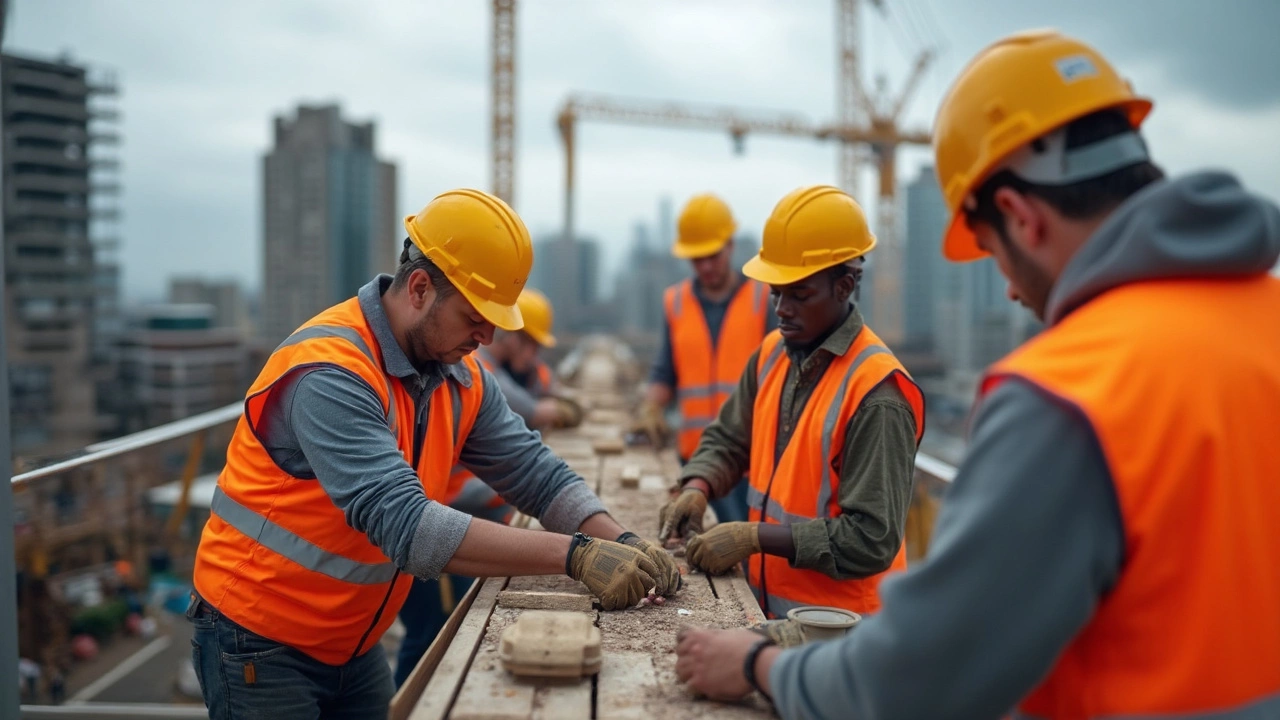Building Construction: Practical Advice for Every Project
Whether you’re fixing a roof, planning a new home, or just curious about how buildings stay solid, you’ve landed in the right spot. Here you’ll find straight‑forward tips on common headaches like mold, cracked foundations, and budgeting surprises, plus ideas on the best materials for today’s builds.
Common Challenges in Building Construction
One of the biggest worries on any site is moisture. Mold can show up in new builds, old basements, or even well‑ventilated rooms if water finds a way in. Look for dark spots, a musty smell, or peeling paint – those are clues you need to act fast. Fix leaks, improve ventilation, and use mold‑resistant products to keep the air healthy.
Foundation cracks are another red flag. Small hair‑line splits are normal, but large gaps, doors that won’t close, or floors that feel spongy mean trouble. A professional can assess whether you need simple underpinning, piering, or more extensive repair. Catching these issues early saves money and prevents structural drift.
Cost overruns creep in when plans change mid‑project. A roof that suddenly costs £30,000 or a hidden structural issue can blow the budget. Keep a tight line of communication with contractors, get a detailed quote up front, and set aside a 10‑15% contingency fund to cover surprises.
Smart Choices for Materials and Design
Choosing the right material makes a huge difference in durability and upkeep. Concrete, steel, and wood remain the backbone of most builds. Concrete offers strength and fire resistance, steel adds flexibility for larger spans, and wood gives a warm feel and is easier to work with for residential projects.
For interior flooring, 2025 trends point to engineered hardwood and luxury vinyl plank (LVP). Engineered hardwood mirrors the look of solid wood but handles humidity better, while LVP is water‑proof, cheap, and mimics tile or stone perfectly. Both options fit a range of budgets and styles, so you can pick what matches your vibe.
Don’t forget the small details that add up. Good lighting that mimics natural daylight can cut energy use and boost comfort. Proper window coverings – whether blinds or curtains – influence insulation and privacy. Simple upgrades like these boost the overall feel without breaking the bank.
When you’re ready to start, map out the project step by step: design, permits, demolition, core construction, finishes, and final inspection. Knowing the timeline helps you stay on track and spot delays early. And always keep a list of trusted suppliers – reliable materials mean fewer headaches down the line.
Building construction is a mix of planning, problem‑solving, and picking the right products. Use the advice here as a checklist, stay proactive, and you’ll end up with a sturdy, comfortable space that lasts for years.
Understanding the 3 4 5 Method in Commercial Construction
- Gavin Whitaker
- |
- |
- 0
The 3 4 5 method is a simple yet effective technique used in commercial construction to ensure right angles in building projects. By applying the Pythagorean theorem in a practical way, this method helps builders create perfectly squared corners, which is essential for structural integrity. This article explains how the method works, its benefits, and handy tips for applying it on-site. With a clear understanding of the process, builders can enhance both the quality and precision of their construction projects.
View more